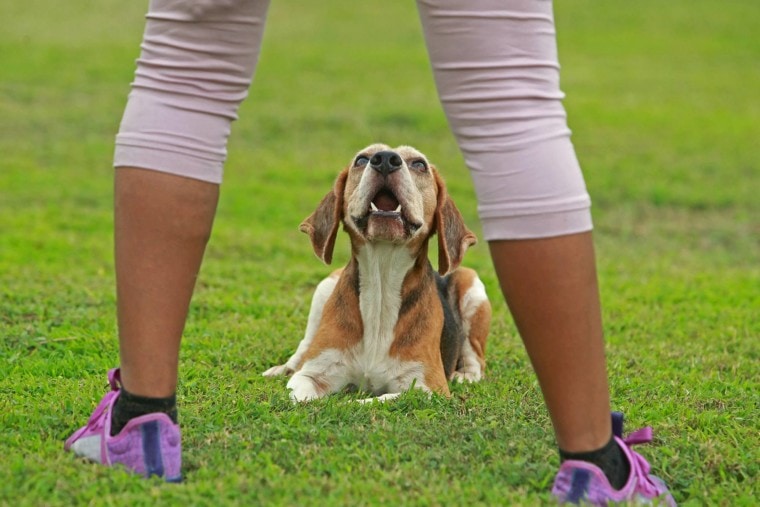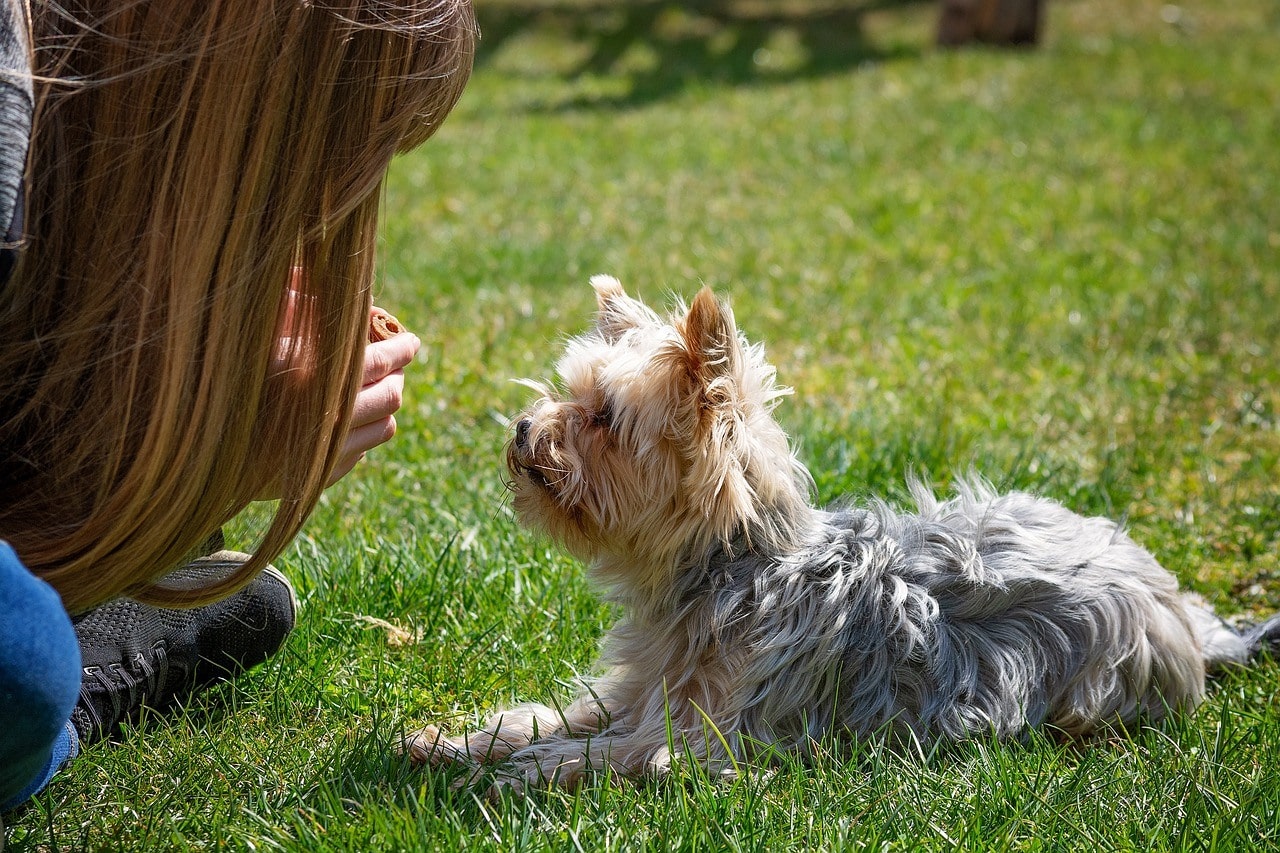
Every dog should know a few basic commands such as sit, stay, and lie down. These commands can make it much easier to live with your pup since you’ll be able to control their actions when necessary.
Many people just yell these words at their dogs, expecting them to naturally understand. Of course, dogs don’t speak any human languages, so you’ll need to train them to do what you want in some other manner. Luckily, it’s not a very difficult process, and there are several different methods you could employ, which we’re going to share in this article.
Top 3 Ways to Train a Dog to Lie Down
Each of the following methods will allow you to train a dog to lie down without much hassle. However, these methods all take different approaches, so read through all three and figure out which approach feels like it will work best for you and your dog.
1. Shaping Method

In the shaping method, you’ll be teaching your dog how to lie down in stages. You’ll have to break the movement down into single parts for this to work.
Step 1. Look at the Ground
The first step is to teach your dog to look at the ground. For this step, you might enlist the help of a lure. This could be some type of treat or toy that your dog loves. Small treats tend to be one of the best choices, such as the Soft Puppy Bites from Wellness. Lure your dog’s head down until they’re looking directly at the floor. Then, praise them and give them the lure treat as a reward.
Step 2. Elbows to the Floor
Once your dog has mastered step one, you’ll need to teach them to lower their arms to the floor. You can do this in essentially the same way as the first stage, by luring the dog down to the floor with a treat.
Step 3. Lie Down
Once your dog is lowering their elbows to the floor, you’re nearly there. Keep using the same method to get your dog’s backside to the floor, and they will be lying down!
Step 4. Add Other Cues
Now that your dog can lie down, you have to start adding in other cues, such as a verbal command for “down.” Wait to start adding this cue until your dog has made it all the way into the lying-down position.
- See also: How to Teach Your Dog to Sit
2. Luring Method
For the luring method, you’re going to basically lure your dog into the position you want with a treat, rewarding them for doing so successfully. Then, you’ll slowly take away the treat until your dog can simply lie down on command.

- Start with your dog in the sitting position.
- Hold a treat to your dog’s nose, like the American Journey Beef Training Bits Dog Treats.
- Lower the treat towards the floor between your dog’s front paws. You want them to lower their head, following the treat to the floor.
- Move the treat along the floor, pulling it away from your dog’s nose so that they stretch out after it. Once you pull the treat far enough, the dog should be fully stretched into a lying-down position.
- The moment your puppy makes it to the lying position, begin praising them and give them the treat that you used to lure them into position.
- Repeat this several times in the exact same fashion.
- After several successful repetitions, start feeding your dog a treat from your other hand instead of the treat you used to lure them down, so they stop thinking about eating the treat they’re following into the lying position.
- Soon, you should be able to lure your dog to the floor with an empty hand. Still reward your dog with a treat from the opposite hand though so they knows that they’re doing exactly what you wanted. Now, they understands your hand signal for lie down.
- If you’d like your dog to respond to a verbal command of “down” or “lie down,” then you’ll want to also say down every time you motion for the dog to lie down. This will associate the movement with your command, and soon, they should be able to lie down off of just your verbal command.
3. Capturing Method
The capturing method is a bit different than the first two ways of teaching your dog to lie down. When using the capture method, you’re not actually trying to get your dog to do anything. Instead, you’re simply looking for the behavior you want, lying down, and rewarding it when you see it.

- Make sure to keep treats in your pocket so you can reward your dog anytime you see them lying down.
- If you catch your dog while they’re in the process of lying on the floor, praise them and offer a treat.
- Soon, your dog will start dropping onto the floor in front of you in hopes of earning a reward. They will have learned to associate lying down with getting a treat.
- Now, it’s time to add in other cues, such as hand signals or verbal commands, so your dog can begin to associate lying down with your cues. After enough repetitions of lying down on cue, you’ll no longer need treats as your dog will simply lie down when they hear the command.
You may also be interested in: How to Teach a Dog to Stay (6 Simple Steps)
Wrapping Up
Ensuring your dog can lie down on command is an invaluable tool in your toolbox as their trainer and guardian. You can use this command to have your dog lie down in stressful situations, which can help the dog to calm down and regain composure.
While it might seem like a difficult thing to train your dog for on the surface, truthfully, teaching your dog to lie down is pretty simple. We’ve provided you with three different methods you can use to achieve the same goal. Determine which of these is the best choice for your dog and you, then start implementing the steps we covered. Your dog will be lying down on command in no time.
Next on your reading list:
- 3 Reasons That Dogs Jump Up on People (and How to Stop It)
- Why Does My Dog Like To Sit On Me? 7 Reasons For This Behavior
Featured Image Credit: SL Chen, Shutterstock







